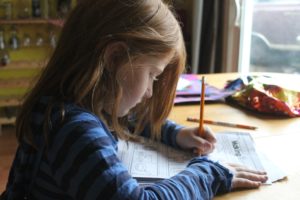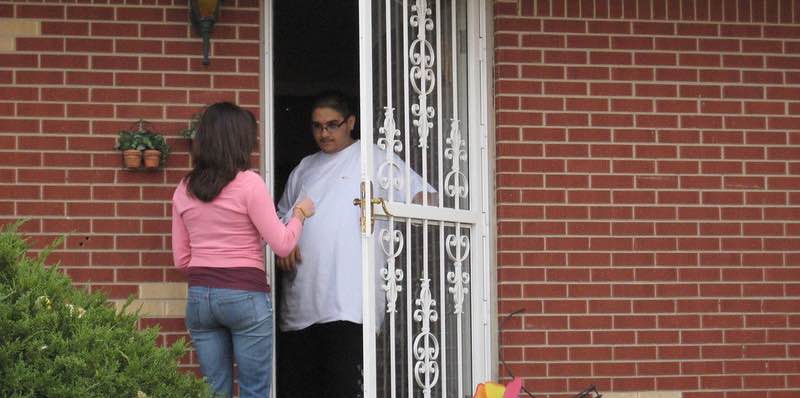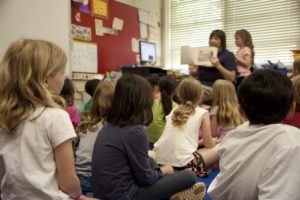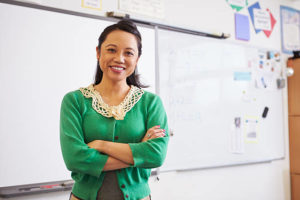
Addressing The Problem with Homework
Many educators are starting to recognize the problem with homework. And while homework is almost universal, there is little evidence that it actually works.

This month’s Educator Spotlight Shines on David Franklin: a teacher, school leader, and education consultant. David talked with us about turning around a struggling San Jose school through community engagement and student connection.
About ten years ago, I took over as principal of a middle school in San Jose. It was in a low-income neighborhood. Most of my students were English language learners, and I worked with a predominantly white staff who didn’t live in the area.
I noticed very early on that the students were not connected to content. And the teachers weren’t necessarily connected to their students. We commuted into town every morning. And at the end of the day, we got in our cars, and we drove away.
The students we left behind faced significant challenges. The school had very low test scores, high level of absentee rates, and little parent involvement. It was basically the stereotypical, urban low-income school.
The crazy part is that San Jose to San Francisco is an hour’s drive. It’s not terribly far. People commute every single day. And I was shocked to learn how many of my students had never been to San Francisco. People come from all over the world to visit San Francisco, and these students were an hour away had never seen it.
The moment when I had a student tell me this, I realized that I wasn’t connected enough with the community. I had to reconsider what I was doing on a daily basis, so I could better understand their experience. I needed to connect with my students so that I could support them in their learning.
To learn more about the community surrounding my school, I used to take my teacher liaison, who was basically my translator, and we would go over and just start knocking on doors. And what we found was that some of these homes were converted garages. Some were two bedroom apartments with four families living in them.
And almost without exception, they would invite us in. They were very welcoming, which floored me. Because in my experience, a lot of people wouldn’t want other people to come and see how they are living. But they invited us in and offered whatever they had in their kitchen. “Let me bring you something to eat or drink.” They were so generous, so welcoming.
So I would come back to school and talk about how much I enjoyed these visits. And soon, some of my teachers started coming along during their prep periods.
At first, the teachers came because they were frustrated that students weren’t bringing their materials to school every day. They would come without pen, pencils, and notebooks, or even their entire back pack. And they wouldn’t turn in their homework.
I think the teachers were planning to talk to the parents and “set them straight.” But once the teachers saw the living situations, they were more understanding. They could see the families just didn’t have the materials. They’re sharing a bedroom with four people and maybe a brother took their pencils.
So it helped. It helped to ground my teachers and really changed their perspective. Not necessarily on how to teach, but how to go out interacting with their students. It’s that first step of creating connections and building those relationships. That’s what started to really make a difference at my school.
So we kept doing the work of trying to listen to our community. To see what we could do to improve the educational experience, not just for the kids, but for their parents as well. They were telling us that they didn’t feel connected to the school, which is why they weren’t coming to school as much as they should.
So after a couple of years of this work, we petitioned our school board. We asked to turn the school into a visual and performing arts school. We were still a neighborhood school. You didn’t have to apply, it wasn’t a magnet or anything. But the community was asking for a better arts program.
At the time, we didn’t have a lot of options for fun and creative courses. There were some basic arts courses, but we were able to bring in more music. We started a band program. And we brought in a really awesome visual art program, including a course on digital graphics. We brought in a really great Mariachi program.
And once we started this program, our daily attendance went up from 91% to 98%, almost overnight. We saw our test scores shoot up. Our discipline rates dropped tremendously. Everything from normal infractions all the way to suspensions. We saw parents getting involved in a way they never had before.
They didn’t want to miss school, because they would miss that class they were really excited about. They didn’t want to get in trouble because then they’d have to be in the office with me rather than being in that class. And the city of San Jose recognized us with a number of awards for the way things turned around.
And all this just by giving kids access to creative options, and letting them have a say in what the school experience was going to be like.
I’d say that’s probably the thing I’m most proud of. And I know the school still exists in that format today and it’s still doing really well.
Teachers who want to connect with students need to start with reflection. We need to constantly ask ourselves, “Am I seeing those results?” It needs to happen on a daily basis. If you wait a week, it’s just too long.
Having access to a coach, whether a true instructional coach, or just a critical friend, is crucial. Too often, that job lands on the principal’s desk. But it should be more of an all-hands activity. Lesson studies, class visits, peer feedback. It’s more than just evaluations coming from the administration.
When I was an instructional coach, we were always thinking, “Can we get a little more creative here? Can we give students options to select from?” Really, the teacher has already kind of chosen for them. They’re giving them three or four options and all are obviously approved by the teacher. It’s a foolproof plan. But it’s really, really important that it feels like this to the student. We need them to feel like they’re in that driver’s seat.
So instead of having kids do a traditional 3-page book report — that they’re going to hate — we’d have them create a movie trailer, or a poster. Do a mock interview with one of the characters from the story. And then the students get really excited about it. And they get to showcase their work. They share with their peers, their parents, whoever. So they’re not just creating for the teacher, the ‘audience of one.’
And to this day, that’s what I coach my teachers on. Think in terms of “What could it be?” and “Let’s get there.” Let’s push ourselves. Let’s get out of the comfort zone. Try something that we’ll all be better for.
Reflection is essential for teachers preparing to work with a coach. But it’s just as important for coaches and school leaders. Coaches must reflect on their own practice. And they need to help teachers reflect on their teaching.
Our free Guide to Reflective Teaching is a great place to start. It includes self-assessments, planning guides, and other resources to support teacher coaching. Complete the guide to ensure that you and your team will get the most out of your coaching efforts.
GET YOUR FREE GUIDE TO REFLECTIVE TEACHING
 Dr. David Franklin is an award winning school administrator, education professor, curriculum designer, and presenter. He believes that every school can succeed when we focus on creating relevant and meaningful learning experiences for our students. You can connect with him via Twitter @SFPrincipal or at theprincipalsdesk.org.
Dr. David Franklin is an award winning school administrator, education professor, curriculum designer, and presenter. He believes that every school can succeed when we focus on creating relevant and meaningful learning experiences for our students. You can connect with him via Twitter @SFPrincipal or at theprincipalsdesk.org.

Many educators are starting to recognize the problem with homework. And while homework is almost universal, there is little evidence that it actually works.

Does the Danielson Rubric improve teaching? Maybe it’s an unfair question. After all, it’s a rubric, not a training program. But…

Looking for a simple way to identify effective teaching? Consider how you (or your team) are performing in each of these three critical domains.